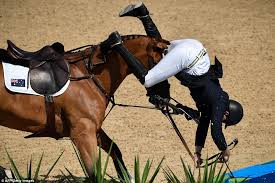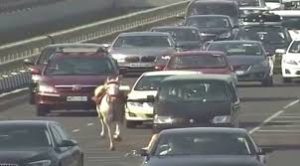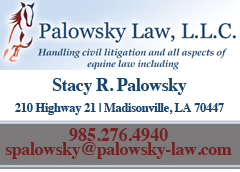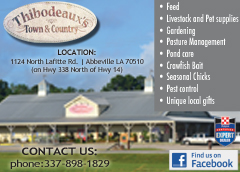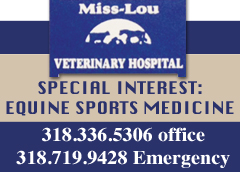by Stacy R. Palowsky, Esq.[1]
Anyone who has ever been involved with horses knows that accidents happen, and if one is around horses long enough, one will either be injured or know someone who is. So, besides trying to stay safe from injury, everyone should also take steps to minimize the risk of being personally liable for injuries or damages to other people or their property. In Louisiana, this can be accomplished by complying with the “equine immunity statute.” Additionally, it is advisable to have the appropriate insurance in place as discussed further below.
First, everyone should be aware that the personal injury liability releases or waivers that they are often asked to sign at barns or events, or which they request that boarders, students, or competitors sign, are not enforceable in Louisiana. Civil Code article 2004 provides as follows:
Any clause is null that, in advance, excludes or limits the liability of one party for intentional or gross fault that causes damage to the other party.
Any clause is null that, in advance, excludes or limits the liability of one party for causing physical injury to the other party.
Thus, for example, if a lesson barn owner has a student sign a waiver that states that the barn owner or its employees will not be liable for any physical injury the student suffers while on the barn’s premises, that waiver will be invalid. I tell clients that these waivers will not be enforced, but it still makes clients comfortable having them. There is no harm in getting a waiver signed, and in certain cases, depending on the language, it can be used to show that the rider was aware of the risks he or she was assuming in partaking in an equine activity. Still, no one should rely on a signed release to provide protection from liability.
Luckily, though, Louisiana has a statute that does provide some protection from liability arising from equine activities, but it is not absolute, and if “professionals” and “sponsors,” as those terms are defined in the statute, do not comply with certain signage requirements, their protection is waived. Louisiana Revised Statute 9:2795.3 provides in part that “an equine activity sponsor, an equine professional, or any other person, . . . shall not be liable for an injury to or the death of a participant resulting from the inherent risks of equine activities . . . .”[2] The statute also states that no one shall make any claim or maintain an action against or recover from a sponsor, professional, or any other person for injury, loss, damage, or death resulting from any of the inherent risks of equine activities. It is important to understand, though, that this does not mean that an injured person cannot sue. It simply means that the defendant should be able to get the suit dismissed eventually via an exception or motion, but remember that there are no guarantees in litigation.
It is also vital to note that subsection C of the statute sets forth exceptions for which there will be liability. Namely, the statute does not prevent damage if a sponsor, professional, or any other person does any of the following: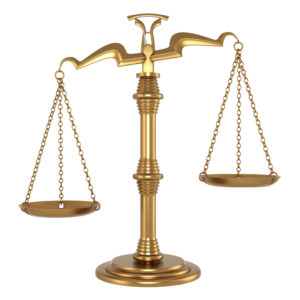
(1) Knowingly provides faulty equipment or tack that caused the injury;
(2) Fails to make reasonable efforts to determine the ability of the participant to engage safely in the activity and to safely manage the particular horse based on the participant’s representations of his ability;
(3) Owns, leases, or otherwise controls the land or facility upon which the participant was injured and which contained a dangerous latent condition which was known or should have been known and for which warning signs were not conspicuously posted;
(4) Commits an act or omission that constitutes willful or wanton disregard for the safety of the participant and that caused the injury;
(5) Intentionally injures the participant.
Furthermore, and perhaps more importantly, a sponsor or professional will not be protected by this statute if certain warning language is not posted in one-inch black block letters “in a clearly visible location on or near any stable, corral, or arena where the equine professional or the equine activity sponsor conducts equine activities.” I recommend to clients that the required warning signs be posted in several places, such as the entrance to the property, any barn entrances, and any and all arena entrances. Note also that most pre-printed warning signs include the wrong statute number and language. It seems that all the signs I have seen cite to La. R.S. 9:2795.1, which is the statute that addresses immunity from liability for “farm animal activities.” While that statute should also protect equine sponsors and professionals, it would be preferable to cite to and use the language required by the more recently enacted equine activity statute.
This being said, the following language must be posted by professionals and sponsors, and out of an abundance of caution, it should also be posted by any person who has horses on his or her property.
WARNING
Under Louisiana law, an equine activity sponsor or equine professional is not liable for an injury to or the death of a participant in equine activities resulting from the inherent risks of equine activities, pursuant to R.S. 9:2795.3.
The language must also appear in “clearly readable print” in any written contracts entered into by a professional or sponsor for lessons or services or for the rental of any horse or tack.
As noted above, the protection provided by this statute is not absolute, and I find that people can be very creative when trying to either invoke or avoid this statute. I have seen litigation over whether the required signs were placed at all or were placed in proper locations, whether the defendant was a sponsor or professional who even had to have signs posted, whether injuries were caused by an “inherent risk” of equine activities, whether an injured person was a “participant,” and whether the injured person was partaking in an “equine activity.” For example, I was involved in a case years ago in which an injured party claimed that because she was riding a horse “just to try a saddle,” then she was not engaged in an equine activity when she got hurt. Luckily for the horse owner I represented, the court disagreed.
Further, there is a reported case involving a horse that escaped from his boarding barn and ran onto a road where he was struck and killed by a vehicle. The horse owner sued the barn owner who tried to invoke the protection of the equine immunity statute. The court found, though, that the risk of a horse getting loose and getting hit by a car was not an “inherent risk” of an equine activity; therefore, the barn owner was not protected by this statute.[3]
If you are a professional, a sponsor of activities, or a horse owner, I recommend that you be familiar with this statute and that you do everything possible to ensure that you are protected by it in the event that someone is injured while you are giving lessons, renting horses, providing land for riding or for events, providing veterinary or farrier services, boarding horses, or even just giving a friend or a friend’s child a “pony ride” on your horse on your own property. Make sure you check the tack being used by the rider. Make sure you provide a horse suitable for the person’s stated riding ability. And finally, make sure your land does not have any hidden defects, and if it does, clearly mark them.
Another method of minimizing personal liability is through maintaining insurance which will cover damages to third parties. Most horse owners are probably familiar with mortality and major medical policies which provide coverage for damage to an owned or leased horse. However, there are also various types of insurance available to protect horse owners and professionals from liability for damage to third parties. The most common types of liability coverage include the following:
(1) Equine Third-Party Liability: This coverage is usually available at an extra cost as an endorsement to an equine mortality policy. Note, though, that it will sometimes exclude coverage for injuries caused by the insured’s horse to persons boarding or training the horse or to farriers or veterinarians.
(2) Equine Commercial General Liability (CGL): This is the most common liability policy, and it provides the broadest coverage and highest limits. The intent of it is to cover “bodily injury” and “property damage” claims by third parties (but not employees) arising out of general equine activities and operations of the insured’s business. Be aware, however, that insurers often rely on an exclusion to deny coverage for injuries that occur while a horse is being loaded or unloaded from a trailer, and we all know that can be a dangerous time depending on the horse. Also be aware that there are normally exclusions for damage to personal property, such as saddles, owned by third parties but in the “care, custody or control” of the insured. In other words, if a boarder’s saddle is damaged or stolen, the barn owner’s equine CGL policy will probably not cover that loss.
(3) Equine Care, Custody, or Control: This coverage, which is available as a policy or as an endorsement to a CGL policy, covers claims for liability due to the death, injury, illness, or theft of a non-owned horse in the insured’s care, custody, or control. However, it generally only covers liability for damage as a result of the insured’s negligence.
(4) Equine Personal Liability Endorsement: This is generally an endorsement to a CGL policy which is available to the insured to cover claims by third parties for bodily injury or property damage caused by owned or leased horses. Note that there are usually exclusions for damages to a trainer, veterinarian, farrier, or boarding barn owner or employee.
(5) Equine Professional Liability Endorsement: This is also generally an endorsement to a CGL policy available to cover the insured from claims by third parties for damages arising from the insured’s negligence in providing professional equine services. This is similar to an errors and omissions, or “E & O,” policy available to other professionals. This coverage is generally not limited to “bodily injury” or “property damage” as the CGL policy is, and the CGL policy’s exclusion for damage to personal property in the care, custody, or control of the insured is normally removed. Note that there will probably be no coverage for liability arising from any fraudulent or criminal acts or from violations of any statute or rules of any equine governing body.
(6) Normally there is also comprehensive personal liability coverage available to farm owners under their farm property coverage. This is similar to the liability coverage found in a homeowner’s policy.
People often do not purchase insurance because they think they will not need it, or they think the premiums are too high. One of the advantages to having insurance, however, is that if the insured gets sued, the insurance company will likely have to pay his or her legal fees. Now, the duty for an insurer to provide a defense for its insured, i.e., pay legal fees, is not absolute, but it is broader than the duty to provide coverage for a judgment rendered against the insured. Anyone who has ever had to hire a lawyer knows that legal fees add up quickly, so having those paid by an insurance company can definitely be worth the premiums even if the policy ends up not covering the judgment or the insured is found not liable.
Note that if an insured does submit a claim or a lawsuit, though, and the insurer refuses to provide a defense and/or coverage, the insured should consider hiring counsel to determine if the insurer’s decision was correct. There are often penalties available if the insurer breaches the duty of good faith and fair dealing owed to its insured.
One last caveat is that insurance coverage is dependent on the language of the policy. So, once a policy is received, the insured must carefully read all the policy language, including the exclusions and endorsements, to confirm that the coverage desired is actually provided. If the insured does not understand the policy, he or she should contact the agent who sold the policy to discuss any questions or concerns. Under certain circumstances, it might also be worth having an attorney experienced in insurance issues review the policy. After all, it is better to find out that certain coverages are not provided before an accident happens, not after. Lack of coverage can be remedied before liability arises, but not after.
[1] Ms. Palowsky is a member of the American College of Equine Attorneys. She also owns two horses, a former police horse who was bred at the Louisiana State Penitentiary and an Irish Draught gelding with whom she plans to do lower-level eventing.
[2] The entirety of the statute can be found at http://www.legis.la.gov/legis/law.aspx?d=181347. All pertinent terms are defined and all pertinent exceptions are set forth therein.
[3] Note also that if the vehicle owner had made a claim for injuries or damages, the barn owner would have probably been liable to the vehicle owner as well for allowing the horse to escape the property and enter the roadway.

